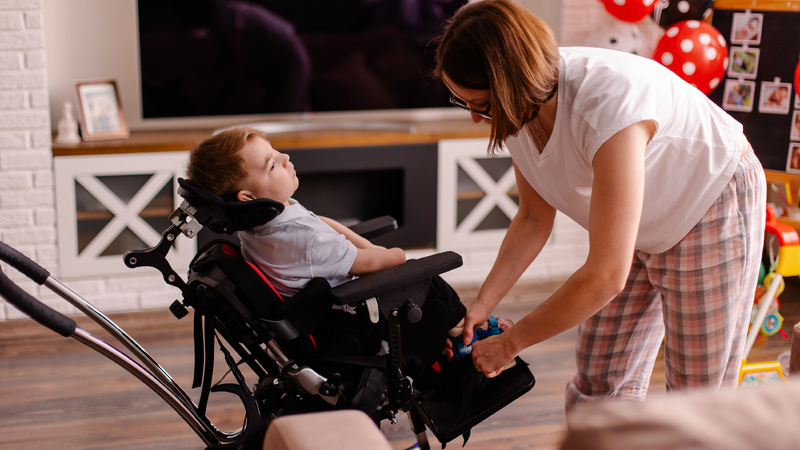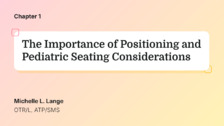Wheelchair Positioning for Kids (Recorded Webinar)
Presented by Michelle L. Lange

12-Month Subscription
Unlimited access to:
- Thousands of CE Courses
- Patient Education
- Home Exercise Program
- And more
This course is a recording of a previously hosted live webinar event. Polling and question submission features are not available for this recording. Format and structure may differ from those of standard Medbridge courses.
Positioning kids isn’t just a smaller version of adult care—it’s a whole different game. As children grow, their range of motion, muscle tone, orthopedic status, and functional abilities constantly evolve. This webinar dives into the unique challenges of pediatric seating, helping practitioners ensure support systems meet a child’s needs now and as they develop. Learn how to use a practical positioning checklist to assess and guide interventions that promote comfort, function, and long-term outcomes.
Learning Objectives
- Identify signs of inadequate postural support in pediatric seating systems
- List typical indicators that a child has outgrown their seating system due to physical growth
- Classify postural and alignment changes associated with common trunk and pelvic asymmetries
- Select appropriate seating system features based on trunk and head postural support needs during occupational engagement
- Visualize the impact of improper seat depth and lower leg length on functional activities such as seated play or classroom participation
- Highlight the importance of interprofessional collaboration and ethical considerations in pediatric wheelchair positioning
Meet your instructor

Michelle L. Lange
Michelle Lange is an occupational therapist with more than 38 years of experience. She has been in private practice at Access to Independence for more than 19 years. She is a well-respected lecturer, both nationally and internationally, and has authored numerous texts, chapters, and articles. She is the coeditor of Seating…
Chapters & learning objectives

1. The Importance of Positioning and Pediatric Seating Considerations
This chapter will review the clinical importance of positioning and specific considerations for working with the pediatric population.

2. Is the Child Positioned Well? Assessing Seating and Posture
This chapter will walk the participant through a checklist to determine whether a child is well-positioned in their seating system or if intervention is required.

3. Is the Seating Size Right? Assessing Child Seating Dimensions
This chapter will walk the participant through a checklist to determine whether the seating system dimensions are matching the client dimensions and needs or if intervention is required. This could include changes required secondary to physical growth.

4. Question and Answer Session
This chapter is a viewer-submitted question and answer session facilitated by Michelle Lange.